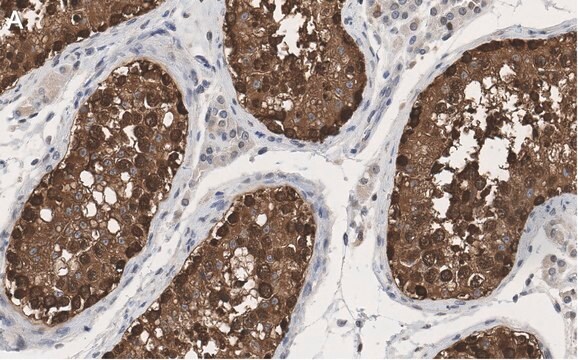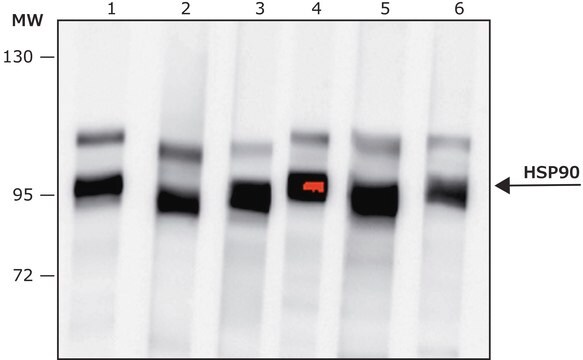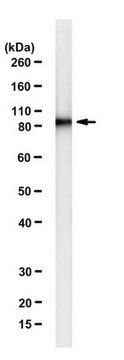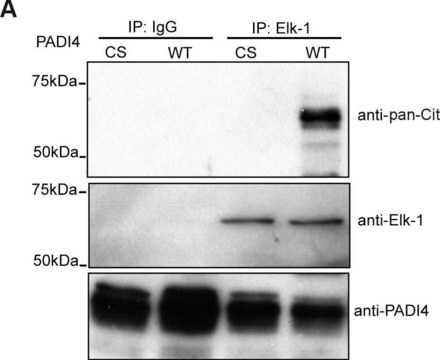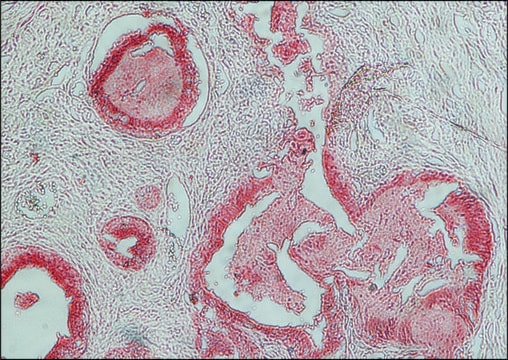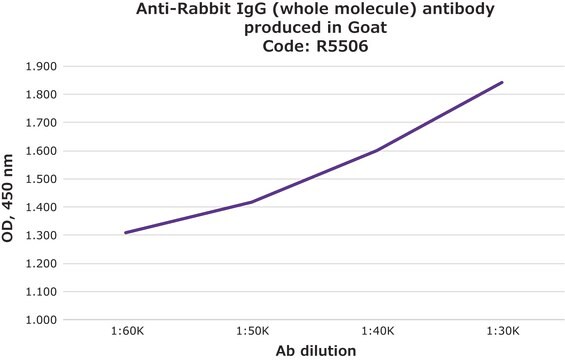MABN788
Anti-nitrated Hsp90 Antibody, clone 44.23
clone 44.23, from mouse
Sinônimo(s):
Heat shock protein HSP 90-beta, Heat shock 84 kDa, HSP 84, HSP84
About This Item
Produtos recomendados
fonte biológica
mouse
Nível de qualidade
forma do anticorpo
purified immunoglobulin
tipo de produto de anticorpo
primary antibodies
clone
44.23, monoclonal
reatividade de espécies
rat
embalagem
antibody small pack of 25 μg
técnica(s)
ELISA: suitable
dot blot: suitable
immunohistochemistry: suitable (paraffin)
western blot: suitable
Isotipo
IgG1κ
nº de adesão UniProt
Condições de expedição
ambient
modificação pós-traducional do alvo
unmodified
Informações sobre genes
rat ... Hsp90Aa1(299331)
Descrição geral
Especificidade
Imunogênio
Aplicação
Neuroscience
ELISA Analysis: A representative lot detected nitrated HSP90 in ELISA applications (Ye, Y., et. al. (2007). J Biol Chem. 282(9):6324-37).
Dot Blot Analysis: A representative lot detected nitrated HSP90 in Dot Blot applications (Franco, M.C., et. al. (2013). Proc Natl Acad Sci U S A. 110(12):E1102-11).
Immunohistochemistry Analysis: A representative lot detected nitrated HSP90 in Immunohistochemistry applications (Franco, M.C., et. al. (2013). Proc Natl Acad Sci U S A. 110(12):E1102-11).
Qualidade
Western Blotting Analysis: 0.25 µg/mL of this antibody detected nitrated HSP90 in PC12 cells treated with pyroxynitrite.
Descrição-alvo
forma física
Armazenamento e estabilidade
Outras notas
Exoneração de responsabilidade
Não está encontrando o produto certo?
Experimente o nosso Ferramenta de seleção de produtos.
Código de classe de armazenamento
12 - Non Combustible Liquids
Classe de risco de água (WGK)
WGK 1
Ponto de fulgor (°F)
Not applicable
Ponto de fulgor (°C)
Not applicable
Certificados de análise (COA)
Busque Certificados de análise (COA) digitando o Número do Lote do produto. Os números de lote e remessa podem ser encontrados no rótulo de um produto após a palavra “Lot” ou “Batch”.
Já possui este produto?
Encontre a documentação dos produtos que você adquiriu recentemente na biblioteca de documentos.
Nossa equipe de cientistas tem experiência em todas as áreas de pesquisa, incluindo Life Sciences, ciência de materiais, síntese química, cromatografia, química analítica e muitas outras.
Entre em contato com a assistência técnica